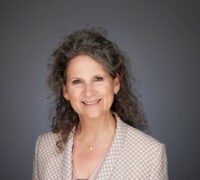In this interactive webinar, Shlomo Ben-Hur discusses his book “Leadership OS” with Susan Goldsworthy.
The book, published at the end of 2019, explains how leadership success is no longer about the leader’s core capabilities, but about creating the right environment, or operating system, for their organization.
Ben-Hur says traditional leadership models have been fixated on the traits and qualities of the leader, but this approach is too simplistic because it ignores the context in which the business is operating. While such models might have worked in the past when business was less complicated, the responsibilities of a leader are now much more complex, involving multiple stakeholders, employees spread across the globe, constant connectivity and much more.
As a result, leaders have an impact on their organizations through other people, rather than directly. “The higher you go, the less direct impact you have on results,” he says.
The role is therefore now about being an orchestrator of the organization’s whole environment: what people focus on, how motivated they are, how decisions get made, the level of accountability and the degree to which people support each other. This requires a completely different approach to leadership.
Ben-Hur and co-author Nik Kinley settled on the idea of an operating system as the basis for their new model after observing how easy their young children found it to use computers or smartphones. This ease of use was the result of the operating system, which manages applications and processes and acts as an interface for users. “In many ways, this is what the work of the leader is about. It’s about creating conditions, managing projects, developing talent and providing an optimal working environment to allow people to flourish and drive performance” says Ben-Hur.
Based on research over five years involving around 2,500 senior leaders, the authors found that a successful operating system is not a function of leaders’ behaviours but about the impact that they have. It is not a question of inputs, but of outcomes. For example, the important thing is not whether leaders demonstrate caring behaviour, but whether employees feel cared for.
And they found that an effective leadership operating system is built on three key elements – trust, clarity and momentum.
Trust is by far the most important, because it underpins the psychological safety that enables people to voice their opinions and challenge others. And as Goldsworthy notes, the question of trust became even more important during the pandemic as more and more people began to work remotely.
Ben-Hur says establishing trust can be a real challenge but failing to do so can have serious consequences, with a lack of trust a major factor in the failure of the merger of Daimler and Chrysler, for instance. If trust is lost, rebuilding it is even more challenging, although it can be done. Video conferencing firm Zoom drew a lot of complaints about security issues when large numbers of people started using the platform at the start of the pandemic, but CEO Eric Yuan restored trust through honest communications with customers and swift action to fix vulnerabilities, which gave people the confidence to start using Zoom again.
Clarity on an organization’s purpose and values, and on accountability for different tasks, is also important in ensuring that everyone is aligned around the same goals. Ben-Hur says some leaders embody such clear values that these don’t need to be set out in writing, citing the example of Zhang Xin, CEO of property group SOHO China, whose buildings represent a visible statement of what her leadership operating system stands for.
Momentum, finally, involves a range of factors that enable a business to unleash the energy needed to achieve its goals – connections, empowerment, confidence and motivation. Goldsworthy noted that momentum is an element that rarely features in other leadership models. And momentum is the driver that was most affected by the COVID-19 crisis. Connections were compromised by the need for social distancing, confidence and motivation were eroded, and people felt less empowered as managers resorted to excessive monitoring of their activities when working from home, says Ben-Hur.
Ben-Hur’s main message for CEOs is one of humility: “It’s not all about you. It’s about the organization and the hundreds of people in your operating system.” But leaders still have a critical role to play in creating the environment in which everyone can flourish and top performance emerges.
This means creating trust so that critical voices can be heard, standing above the fray to get a good overview of motivation and confidence in your organization, and picking up on weak signals detected by people in your operating system about potential problems in your supply chain or market.
And it also means recognizing that you do not have all the answers but that many of those will emerge if you establish trust, create clarity and drive momentum.
This has prompted some people to wonder whether organizations can be run without leaders. Ben-Hur once observed the New York Orpheus Chamber Orchestra, which has no conductor, and found that while the process of rehearsals was painful, the orchestra still produced amazing performances when on stage. This led him to question the need for conductors and even other leaders in general, but he concluded that they remain essential. “I would argue that we need leadership, but we need leadership that is humble about its role and one that establishes an operating system that allows that music to emerge,” he says.
YouTube



 Podcast available
Podcast available